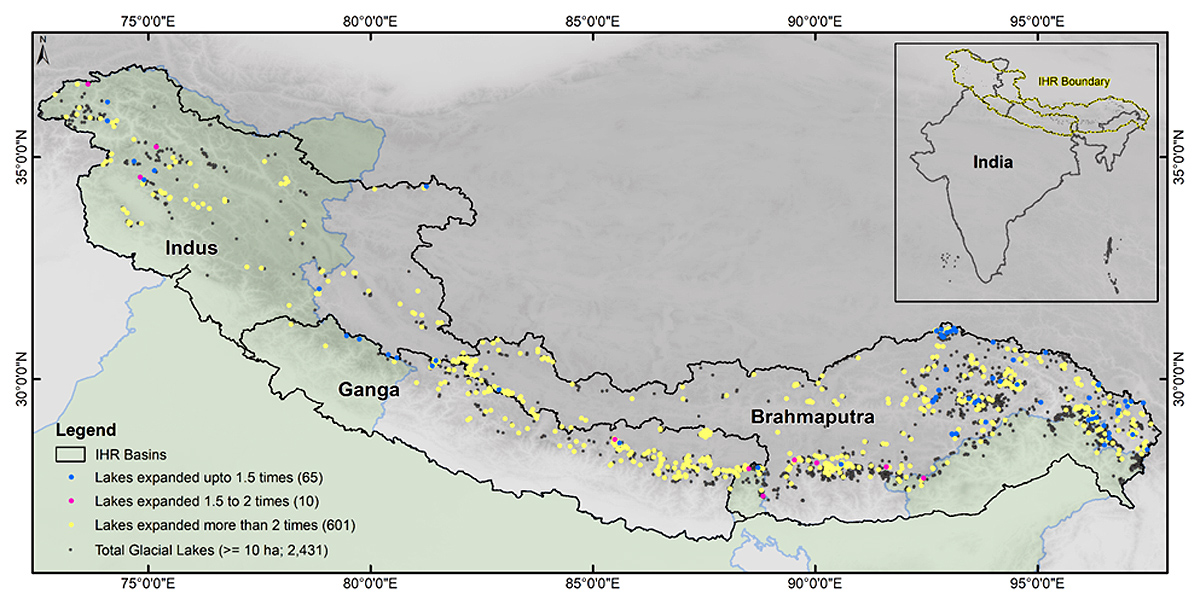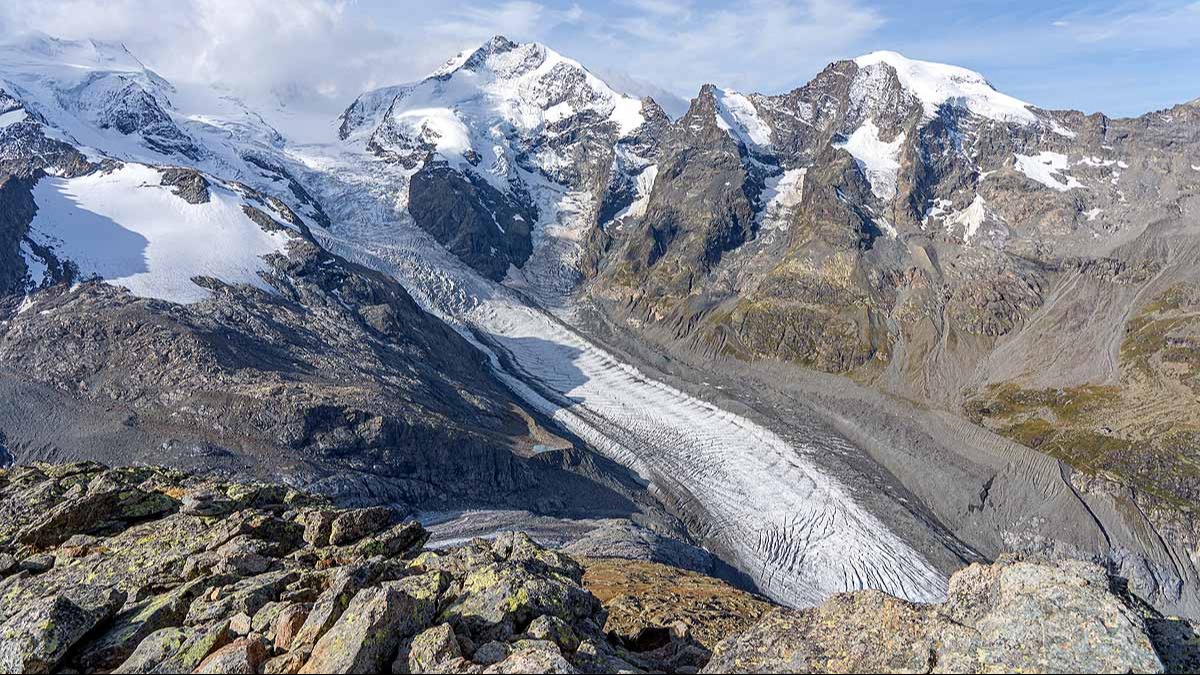Often referred to as the 'Third Pole', the Himalayan ranges are greatly impacted by global warming. The melting snow and shrinking glaciers have profound social ramifications.
The retreat of glaciers signifies rapid melting, forming and expanding Glacial Lakes — the lifeblood of India's rivers yet potentially treacherous.

Source: aajtak
These lakes pose the risk of Glacial Lake Outburst Floods (GLOFs), similar to the catastrophes at Kedarnath, Chamoli, and Sikkim, threatening the lower regions with flash floods and landslides.
ISRO monitors these Himalayan glacial lakes,
Using satellites, ISRO keeps an eye on the formation and growth of these lakes, aiming to evacuate people before any hazardous lake outbursts.
Himalayas harbor 2,431 lakes with increasing sizes

Source: aajtak
Statistics from 1984 to 2023 indicate 2,431 sizable lakes, with 676 enlarged. In particular, 130 within India, predominately along the rivers of Indus, Ganga, and Brahmaputra.
89 percent of the 676 lakes have expanded more than twice their size,
Out of 676, a notable expansion has been observed in 601 lakes, with 10 doubling and 65 growing by 1.5 times. These lakes, at altitudes of 4-5 thousand meters, with 296 above 5 thousand, categorize into Moraine Dammed, Ice Dammed, and Erosion-formed glacial lakes.
A Himalayan lake enlarges by 178 percent
Among these, 307 are Moraine Dammed, 265 formed by erosion, and 8 are Ice Dammed. The Ghepang Ghat glacial lake over the Indus in Himachal Pradesh grew from 36.40 hectares to 101.30 hectares, an increase of 178 percent annually.




